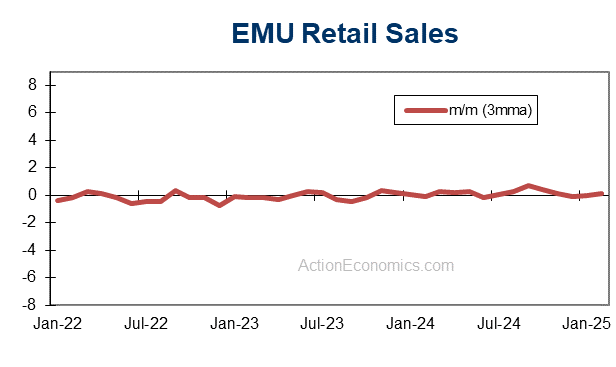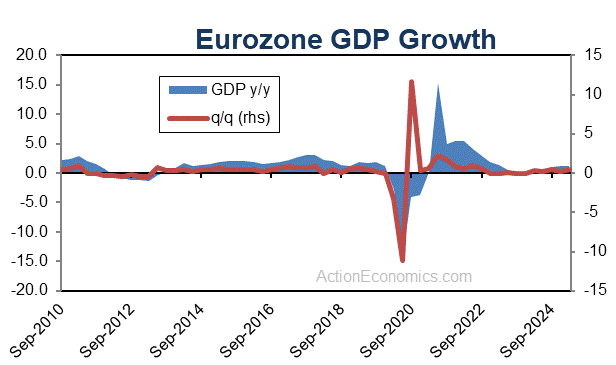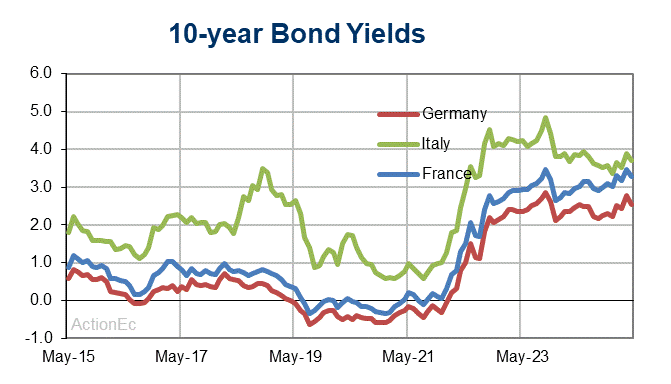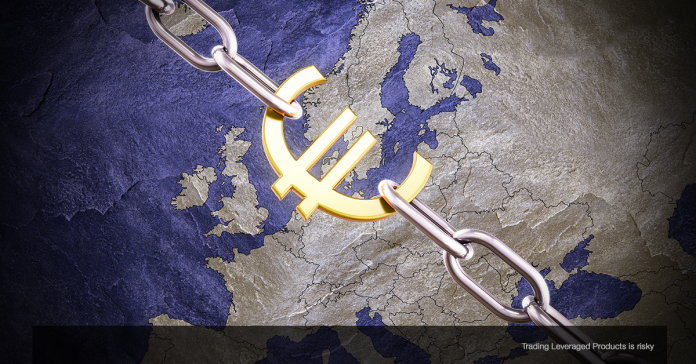Eurozone HICP inflation continued to nudge lower in the preliminary reading for February, but by less than anticipated. At the same time, core inflation, which is now the primary focus for central banks, jumped to a new record high of 5.6%. This is nearly three times the ECB’s target, and it leaves the central bank on target to continue to hike rates beyond the widely expected 50 basis points in March. The slowdown in pace, which we had expected in May, looks less likely now.

Headline HICP inflation decelerated to 8.5% y/y, which marked the fourth consecutive decline since the peak of 10.6% y/y in October of last year. The dovish camp had been quite vocal in anticipation of the renewed decline, and stressed not just that headline rates are coming down, but also that previous rate hikes still continue to filter through to the economy. Chief economist Lane this week also suggested that “there is significant evidence that monetary policy is kicking in”, and that “for energy, food and goods, there is a lot of forward-looking indicators saying that inflation pressures in all of those categories should come down quite a bit”.
There was no sign of this in this week’s numbers though, or indeed in any of the national readings that preceded the release of the overall Eurozone HICP. On the contrary. Yesterday’s report flagged that the modest decline in the headline — from 8.6% y/y — was entirely due to a sharp deceleration in energy price inflation, which dropped to 13.7% y/y in February from 18.9% y/y at the start of the year. This reflects a clear reduction in market prices for gas and oil compared to last year, but also government measures designed to ease the pain for consumers. Prices for all other categories rose faster last month than at the start of the year.

Prices for food, alcohol and tobacco jumped a further 1.6% m/m in February, bringing the annual rate to a whopping 15.0% y/y. Adverse weather conditions, but also the fact that producers had to pay higher prices for fertilizer and the energy used in greenhouses, partly played a role in driving up prices for unprocessed food. These prices are now 13.6% higher than a year ago. Prices for processed food have jumped even more, and are up 15.5%. Services price inflation accelerated to 4.8% y/y, and prices for non-energy industrial goods are 6.8% more expensive than in February of 2022.
Latvia still has an inflation rate of 20.1%, and in Germany, France, and Spain annual rates actually accelerated in February. This is a very uneven picture that makes it difficult for the doves to argue with certainty that inflation has peaked and that price pressures are abating. Lane can point to PMI reports, which showed that input price inflation has eased, but also that selling price inflation remains stubbornly high — even if the rate of increases has ebbed somewhat. Wage growth is picking up, and the latest jump in food and services price inflation will make it even more difficult to call for wage restraint by arguing that energy prices are already coming down.
Indeed, the ECB’s latest survey of inflation expectations is from December, when the focus was very much on energy prices. Back then, there had been a string of relief measures announced by governments, alongside clear signs that global market prices for oil and gas were coming down. The uptick in food and services price inflation in February, however, will be quite visibly eating into real disposable income, and these gains will drive wage demands, especially as unemployment remains low by Eurozone standards, with a shortage of skilled staff in some sectors. This should keep services price inflation, which dominates the core reading, considerably above target for a while.

ECB Lagarde said food price inflation was likely to prevent headline rates from falling in a straight line. She remains convinced that inflation will continue to decelerate. While we agree with that, the reality is that the decline is slower than the ECB would like, as pass-through effects from previous energy price increases, coupled with the impact of rising wage growth, will keep cost pressures elevated. With demand picking up, there is now more room to pass on those increases.
Lagarde once again sat on the fence with regard to peak rates, and this also owes a lot to the fact that the Governing Council is increasingly divided on the need for additional rate hikes. Yesterday’s release of the minutes to the last meeting confirmed that not everybody was in favour of committing to another half point hike for the March meeting. The debate will likely be even more fierce this time around, although record core inflation will make it difficult for the dovish camp to question the need for additional rate hikes.
A 50 basis point hike on March 16 is very much a done deal and fully priced in. The next meeting after that is on May 4. There will be a lot of key data between the two meetings, and with that in mind Lane and the dovish camp will be eager to prevent the ECB from committing to another 50 basis point hike in March. We would suspect Lagarde will be signalling the need for more tightening but be more circumspect on the size of the following steps. A half point hike in May is more likely after yesterday’s numbers, especially as the updated staff projections will likely bring upward revisions to the short term inflation forecasts. However, we suspect that the doves will prevent an early commitment to another outsized move unless there are huge upward revisions to inflation projections.
For now we are sticking with our forecast of an additional 75 basis points in hikes after the 50 basis points in March, which would bring the deposit rate to 3.75% and the refinancing rate to 4.25%. A 4% terminal deposit rate is a possibility, especially if the ECB sticks with 50 basis points in May. However, the hawks also have their eyes on QT. Bundesbank President Nagel has already suggested that the ECB should shrink the balance sheet faster from July onward, indicating that this will be a big part of the future discussion on overall policy settings. The same holds for the overall policy path and Lane has already indicated that any slowdown in pace will come with a clear signal that rates will have to remain at restrictive levels for an extended time. Any lingering hope that the ECB will be ready to pivot later in the year will be disappointed.
Click here to access our Economic Calendar
Andria Pichidi
Market Analyst
Disclaimer: This material is provided as a general marketing communication for information purposes only and does not constitute an independent investment research. Nothing in this communication contains, or should be considered as containing, an investment advice or an investment recommendation or a solicitation for the purpose of buying or selling of any financial instrument. All information provided is gathered from reputable sources and any information containing an indication of past performance is not a guarantee or reliable indicator of future performance. Users acknowledge that any investment in Leveraged Products is characterized by a certain degree of uncertainty and that any investment of this nature involves a high level of risk for which the users are solely responsible and liable. We assume no liability for any loss arising from any investment made based on the information provided in this communication. This communication must not be reproduced or further distributed without our prior written permission.



















